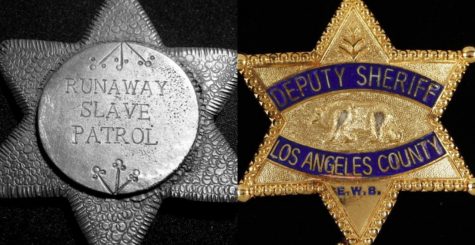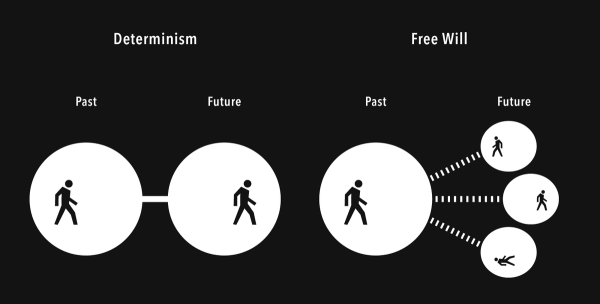Who Polices the Police?
20-year-old Daunte Wright was pulled over for a traffic violation on April 11th, 2021. The incident quickly turned violent when Officer Kim Potter “had the intention to deploy their Taser but instead shot Mr. Wright with a single bullet,” according to Chief Tim Gannon of the Brooklyn Center Police Department.
According to the Minneapolis Police Department website, the police “provide public safety services to support our environment and quality of life.” But since George Floyd was murdered in May of 2020, the public, specifically communities of color, have felt anything but safe.
Everyday, it feels as if a new life is lost at the hands of law enforcement. Americans have been left wondering; what happens when the protectors of the public attack it? Who polices the police? And, most importantly, is policing inherently flawed?
To understand our modern policing systems, we must trace them back to their roots. According to Gary Potter, a crime historian quoted in Time, modern policing is “driven by economics and politics.” In the colonial era, policing was casual, paid, and volunteer-oriented. Potter proceeds to say that badges were resisted at this time, with officers being afraid of the general public distaste for law enforcement. As America’s cities grew, sloppy, community-based systems began to fail, resulting in the creation of the first police force in Boston to protect the merchant community. However, the responsibility of paying for a police force was given to the citizens, arguing that it was for the “collective good.” (Time).
In contrast to Boston, the racist origins of policing we now face began in the South, where policing was a means to preserve enslavement and in turn protect the Southern economy. The South’s economy was built on the backs of enslaved Black Americans. The largest police systems were made to catch runaway slaves and quell revolts. The military assumed this role during the Civil War, and after, local departments upheld the legacy, “enforcing segregation and the disenfranchisement of freed slaves” (Time).
There was never a distinct centralization or standardization of policing in America. Our modern system is a strange amalgamation of Northern policing for merchants and Southern slave patrols. What most powerfully stresses this is a side by side comparison of modern police badges and slave patrol badges:

Today, we are left playing with the frayed ends of corrupt systems that specifically didn’t have the protection of the public as their first priority. Instead, policing was and is controlled by what our country is controlled by: economic gain and racial hierarchies. It is no coincidence that Black men are 2.5 times more likely than white men to be killed by police (Edwards), and that Black people who were fatally shot by police are twice as likely as white people to be unarmed (Nix). It is impossible to say, in the instances of Daunte Wright and George Floyd, that race was not a factor. Even if Derek Chauvin and Kim Potter were not outwardly racist bigots (which is currently unknown), the killing of Black men by white law enforcement echoes the power dynamics that began in the Colonial era. These tragedies are products of a racist system.
Histories of corruption left unacknowledged breed more corruption. In a comprehensive investigation by Knock LA into the Los Angeles Sheriff’s Department, the following was revealed:
“There are at least 18 gangs within the Los Angeles County Sheriff’s Department. Officials at various government agencies, including the Los Angeles County Board of Supervisors, the Los Angeles County District Attorney, the California Senate Senate Subcommittee on Police Officer Conduct, and the United States Commission on Civil Rights have heard testimony on the violence inflicted on communities at the hands of deputy gangs for decades.”
“Deputy gangs have killed at least 19 people, all of whom were men of color.”
“Litigation related to these cases has cost the County just over $100 million over the past 30 years.”
The full report can be found here.
The La Cañada-La Crescenta Sheriff’s Department is a subdivision of LASD, which also underwent an FBI investigation that charged 18 members of the department with various abuses of power. LASD is not an isolated case. Just like the harrowing statistics of Black Americans and policing, it is no coincidence that 85,000 police officers have been investigated for misconduct over the past decade, or about 12% of the current number of full-time police officers (USA Today and Statista).
These statistics can be viewed as tragedies or calls to action. Many alternatives to policing include community-based organizations with unarmed task forces. Examples of these include specialized “officers” trained to deal with mental health crises or traffic violations, jobs that simply do not require a gun. This diverts the responsibilities of the traditional police officer, who is allotted the power to protect, arrest, counsel, and kill. These powers are far too heavy for a person with 6-8 months of training to carry (APOA). For comparison, a social worker requires a four-year Bachelor’s degree (MSW). A barber requires one to two years (CPT). How can it be that those entrusted with our lives require less training than those entrusted with our hair?
The founding fathers — the creators of the womb that policing was born out of– ensured a system of checks and balances. Today, our law enforcement has abandoned that.
Note: In the process of writing this article, the FBI has begun investigating the Minneapolis Police Department for their use of excessive force.
Names of those murdered by police in 2020
Read about the most recent publicized police killing
Donate to Daunte Wright Memorial Fund
Learn more about reimagining policing
Get involved in La Cañada BLM Protests
Sources (in order of appearance)
Details on the murder of Daunte Wright
Details on the murder of Daunte Wright (2)
Comprehensive history of policing (Time)
Minneapolis Police Department Website
Academic study on POC-targeted police violence
Academic study on POC-targeted police violence (2)
In-depth investigation into LASD gangs
More information on La Cañada police
Number of active police officers
Number of officers charged with misconduct
Information on police academy training
How long it takes to become a social worker
How long it takes to become a barber
Results of 2013 FBI investigation into LASD

Grade: 12
Years on Staff: 3
Why are you writing for the Flintridge Press?
The Flintridge Press gives me an opportunity to showcase my voice as...






